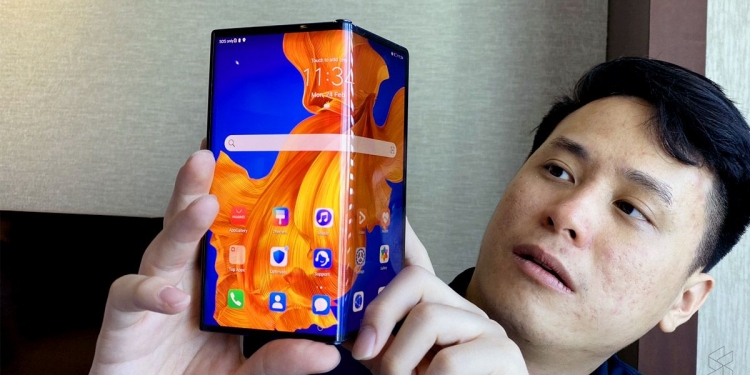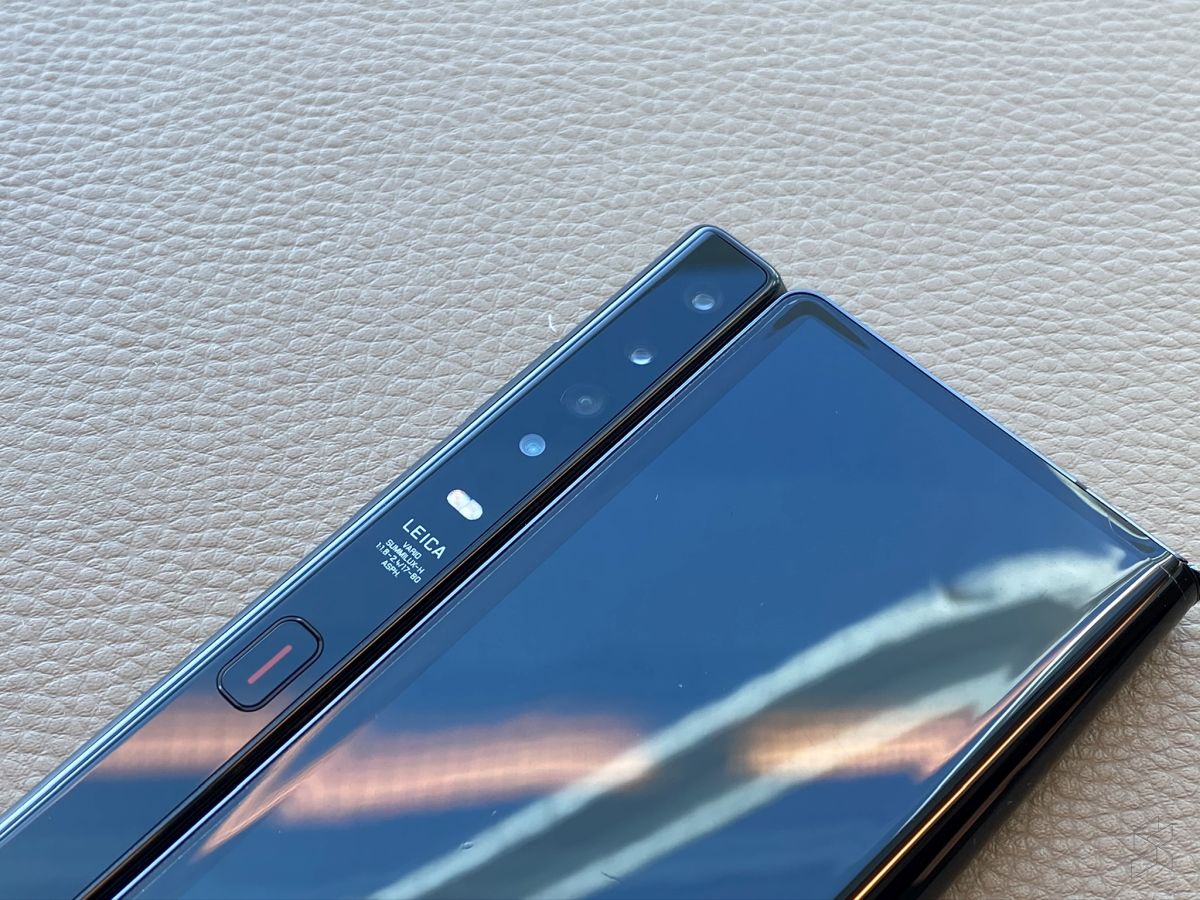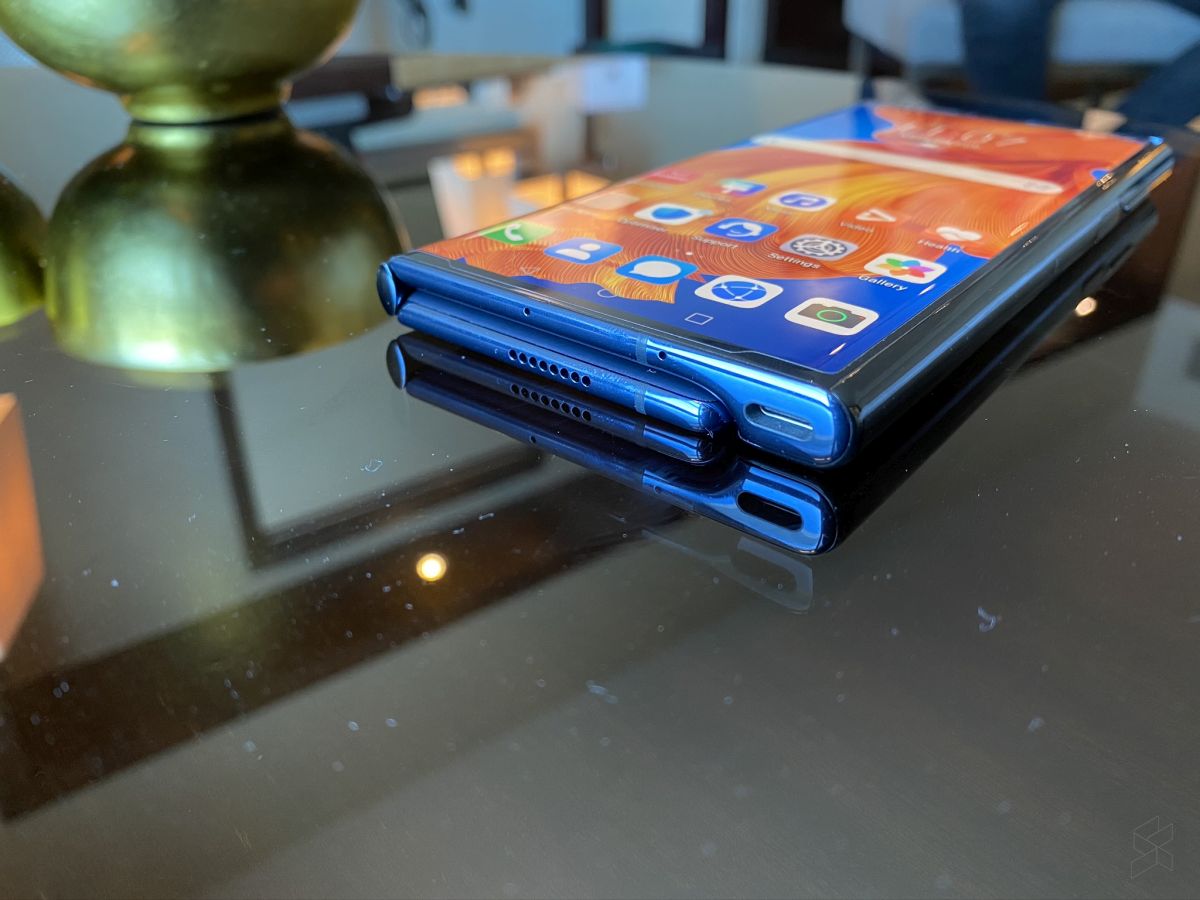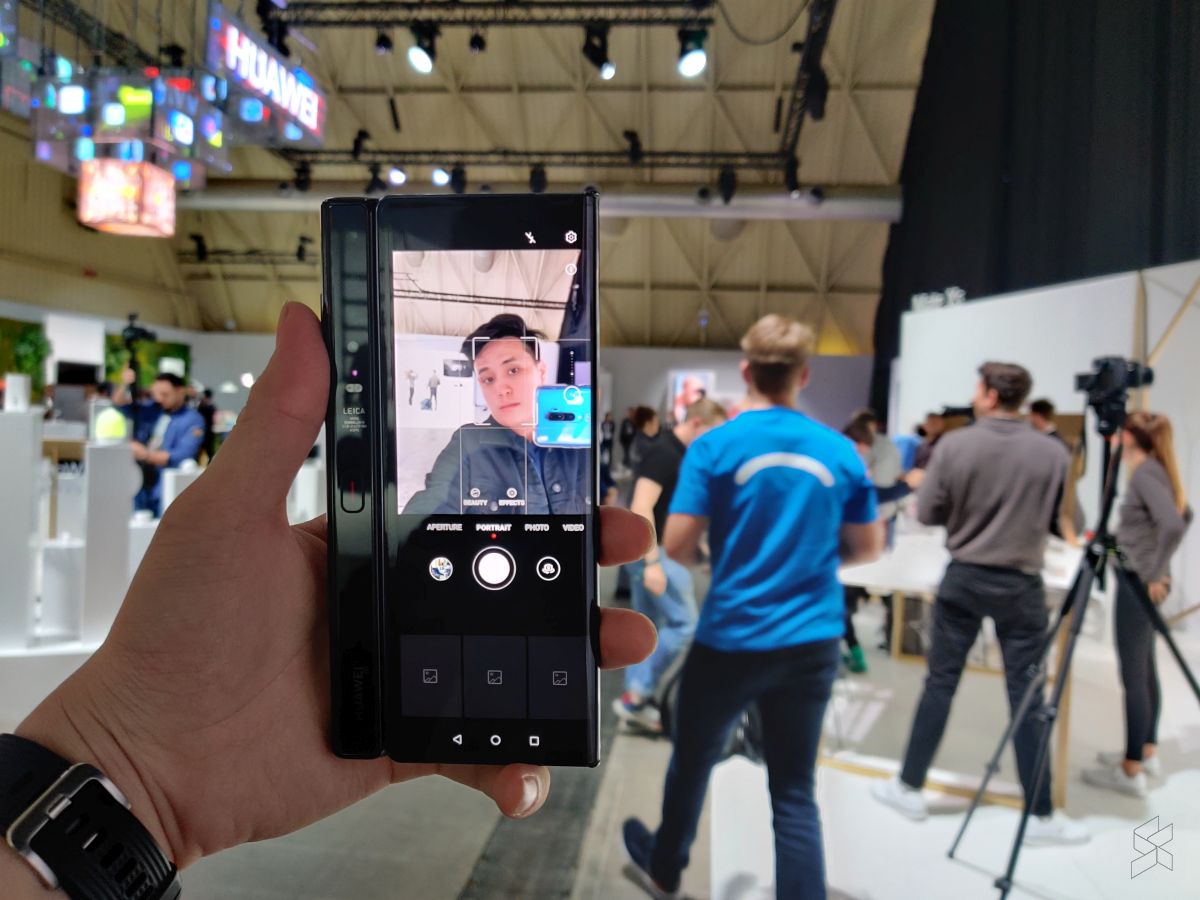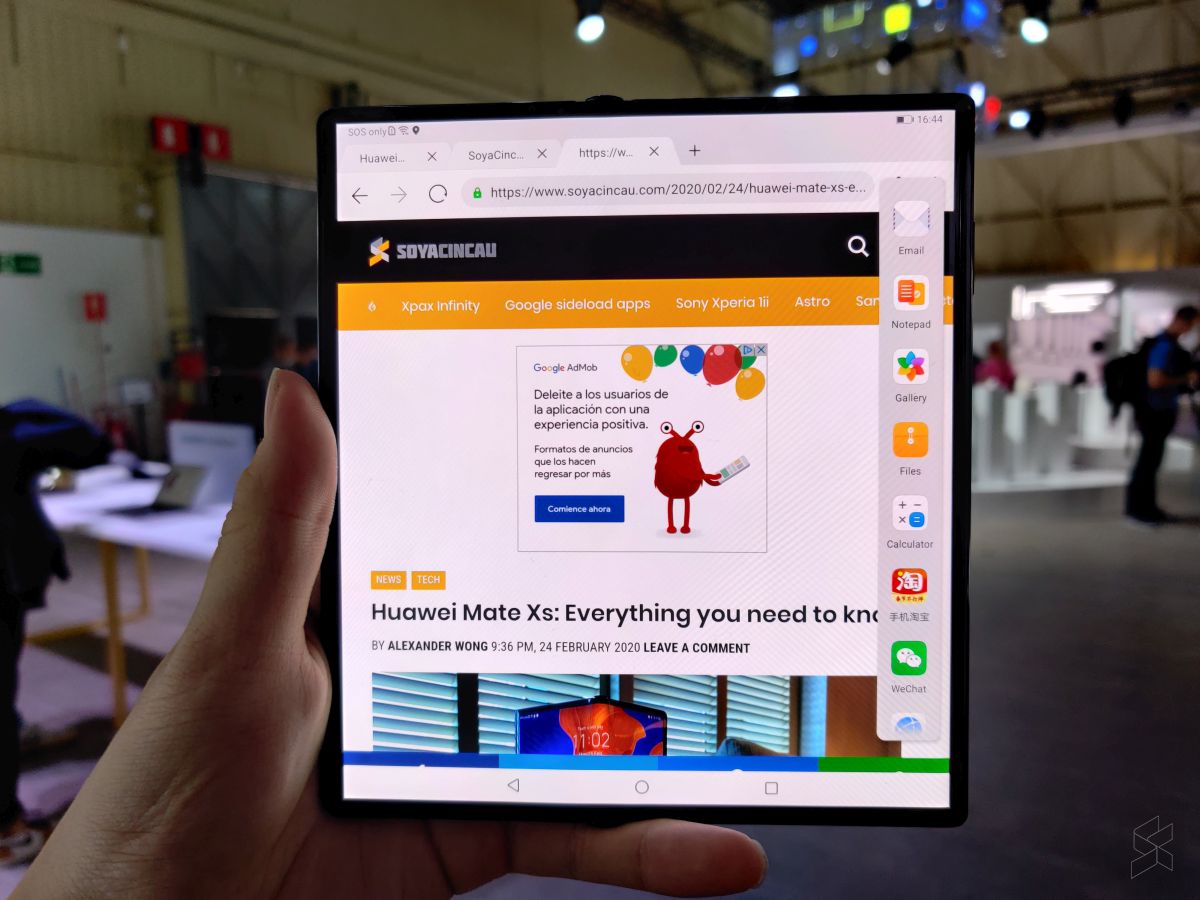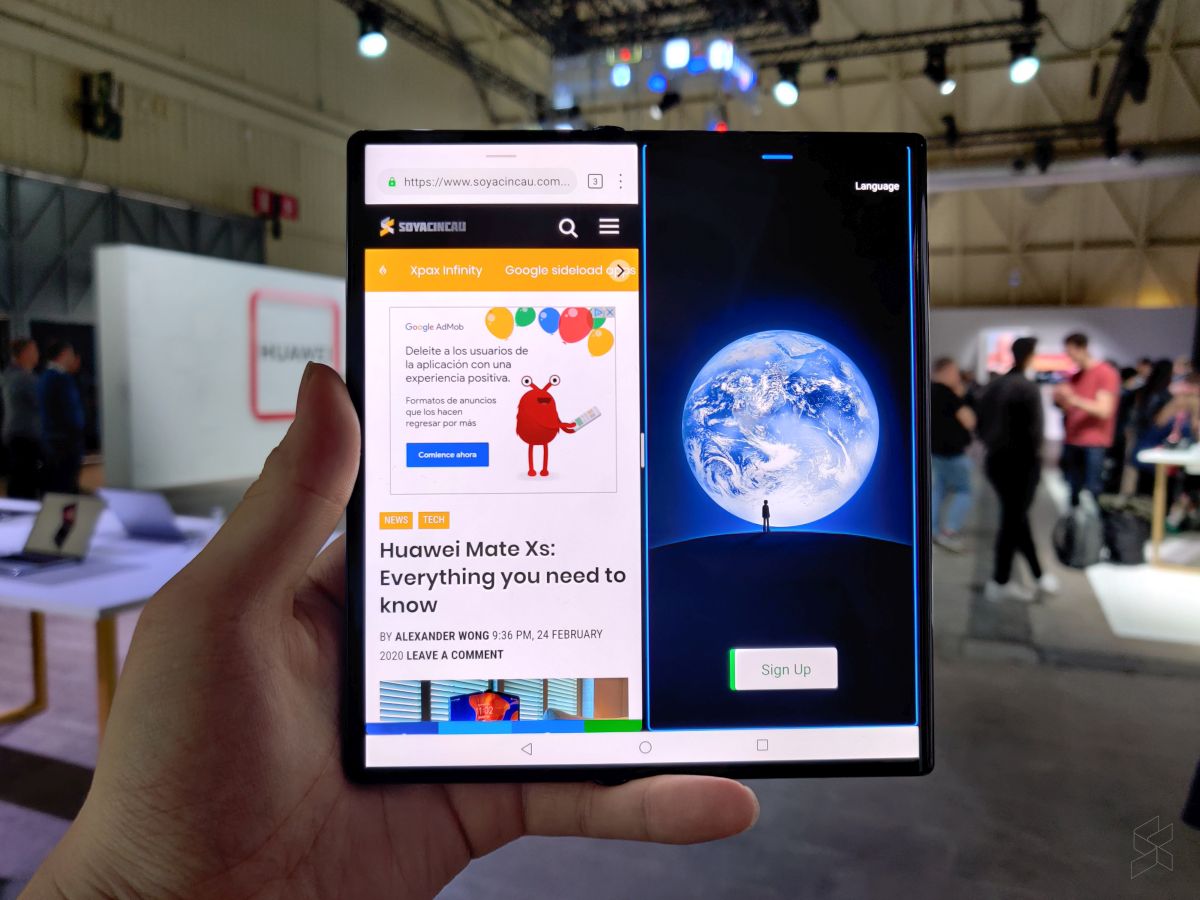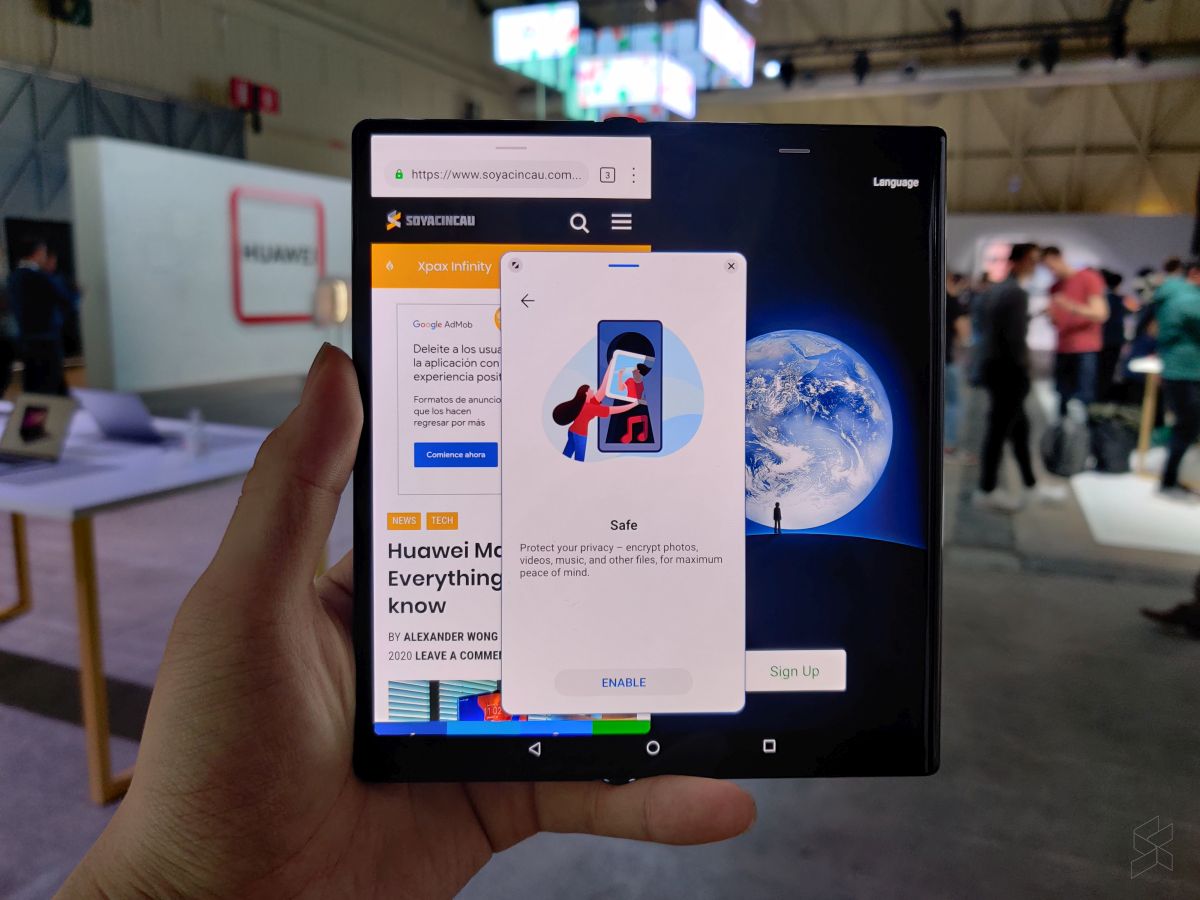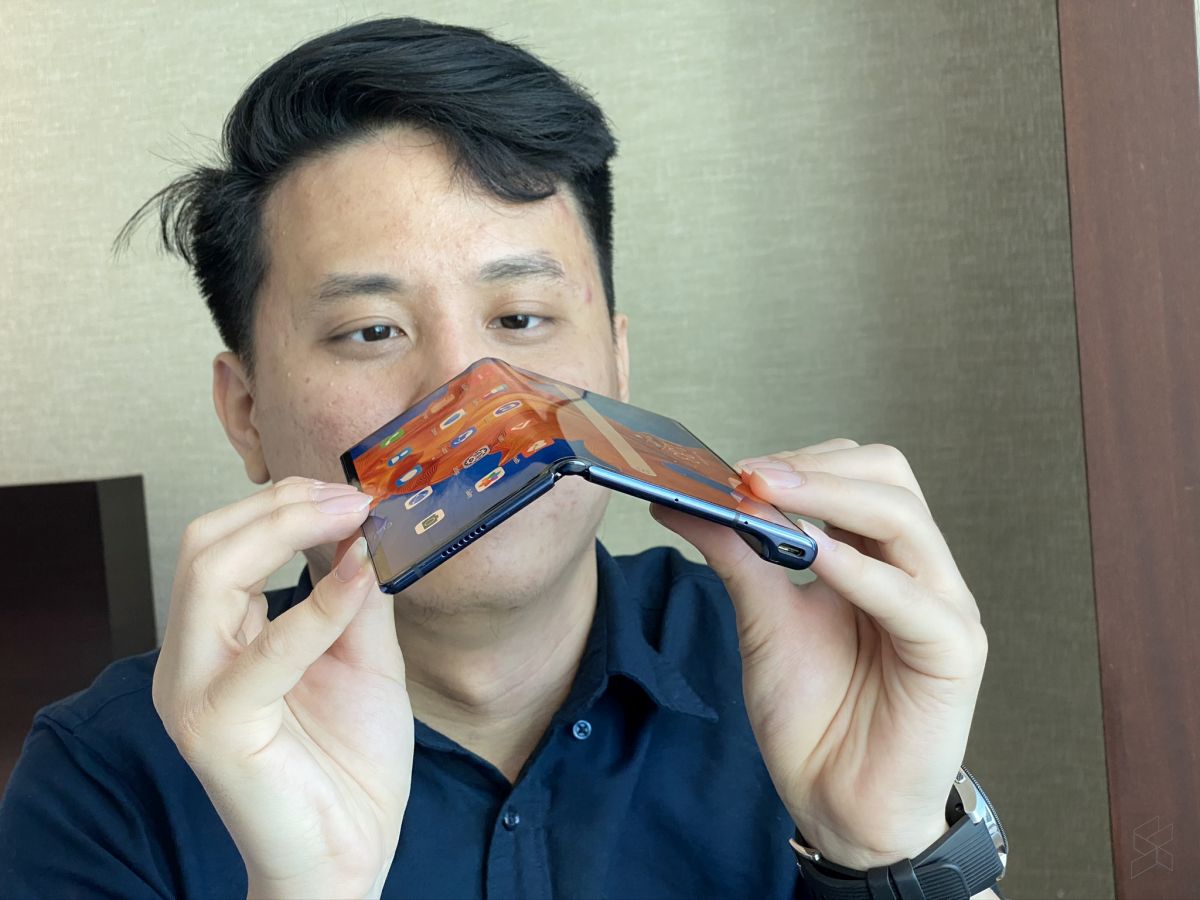Today, Huawei launched the Huawei Mate Xs: the latest foldable smartphone in an ever-growing list of such devices in the market today. The device was launched via a global livestream broadcast from Barcelona, Spain, and as I was fortunate enough to be in attendance, I managed to get a quick hands-on with Huawei’s latest and greatest foldable yet—although the greatest part might not be so readily apparent. But more on that later.
The Mate Xs, at first glance, looks identical to its predecessor, the Mate X. A flexible, 8″ main screen can be folded into two smaller displays when in “phone mode”: a 6.6″ front-facing display, and a 6.38″ display on the back of the device—pretty much an identical setup to the Mate X.
Still, I’ll say that that isn’t a bad thing at all. Arguably, Huawei has stayed true to a form-factor that could potentially be the one that best utilises the potential of a foldable smartphone—that is, one that folds with the screen on the outside of the device, rather that the opposite (basically, the Galaxy Fold).
Obviously, this leaves the screen vulnerable to any number of potentially costly happenings. This is a phone that’s retailing for EUR2,499 (RM11,399), after all. But if you compare the benefits of Huawei’s design to the more conservative design of something like the Galaxy Fold, and do a rough cost-benefit analysis, it’s clear—at least, it is to me—that you get a lot more out of the Xs’ form-factor.
For one, you get a significantly larger screen to use when the device is folded. Many of the SoyaCincau team have had the chance to use foldable phones, and the answer is clear: despite the wow-factor of using a foldable phone in “tablet mode”, you spend most of the time using the device in “phone mode”, which amplifies the importance of the front-facing screen.
And that brings us to number two. Huawei’s outside-fold design also means that you don’t need a separate front-facing camera, with the main camera setup doubling up as your selfie camera. Turn the phone around, the 6.38″ secondary display lights up, and snap your picture. Again, this is something that was already present with the original Mate X—but it offers more evidence that Huawei wants to fully explore the potential of the foldable form-factor.
Often times, many regard the foldable phone as nothing more than wow-factor device, which cannot be further from the truth. Think about it this way. Essentially, a foldable smartphone is a 2-in-1 device: a tablet and a smartphone. Yes, we’ve seen some design flaws of epic proportions in the past, but the tech has had some time to mature. Which might explain the naming of the Mate Xs—an incremental upgrade, one to iron out the kinks.
Huawei told me that a lot of focus has been put into making the Mate Xs a viable, productive device, with emphasis placed on its software. You see some of that with the new “App Multiplier” function, which allows you to view two pages within the same app—although this is only supported on a few apps. For example, you can use a news app to have a the homepage of a news website on the left half of the app, and specific articles loaded up on the right half of the app.
It’s an idea that has quite a number of practical uses, and I definitely appreciate the fact that the team at Huawei has apparently been putting some serious thought into fully utilising the real estate of the 8″ display.
Additionally, there’s the multi-window function, which is basically Windows’ Snap Windows for the Mate Xs. You can have two windows simultaneously running side-by-side, along with a third, floating window. It’s not exactly the most ground-breaking, iconic feature—it’s not even the most original idea, but I can see how it give the Xs a lot more functionality.
There are other software tricks that Huawei has slipped into the EMUI 10.0.1 (based on Android 10), including giving gamers a wider field-of-vision when playing PUBG (supported games only) and floating reply windows, and it’s all certainly promising.
Specs-wise, it’s nothing particularly shout-worthy, in comparison to the foldable nature of the device, of course. You get a 4,500mAh battery that can be charged at 55W, an almost identical Leica co-engineered quad-camera setup to the Mate 30 Pro 5G, and (only) 8GB of RAM paired with 512GB of storage with the single variant available. For some reason, however, Huawei decided not to include stereo speakers on the Mate Xs, and there’s also the notable absence of wireless charging.
Now, I know that some of you don’t consider wireless charging to be the most essential thing ever, but let’s face it: when you buy something at this price, you expect it to have the best specs possible. And why couldn’t we get a 12GB RAM option? It’s disappointing.
The lack of dual stereo speakers makes even less sense to me. When I think of a foldable smartphone, I think about the potential it has as a device for media consumption. A quick unfold, and I have the ideal device for some Netflix, a movie or two, or YouTube. And while the Mate Xs certainly has the display for it, the single speaker located at the bottom of the device (or the side, depending on how you hold it) is decent, but utterly disappointing for what the Mate Xs is.
But what is worth shouting about, judging by how Huawei talks about it, is the Kirin 990 5G powering the device (the Mate X had a Kirin 980 along with a Balong 5000 5G modem). The integrated 5G modem with the 990 5G means that both NSA and SA standards are supported by the Mate Xs, and the fact that all global 5G bands are supported is a huge plus in my book (in case you missed it, not every flagship 5G phone has this level of support). If I dropped 11 grand on 5G smartphone, it had better support 5G—wherever I am.
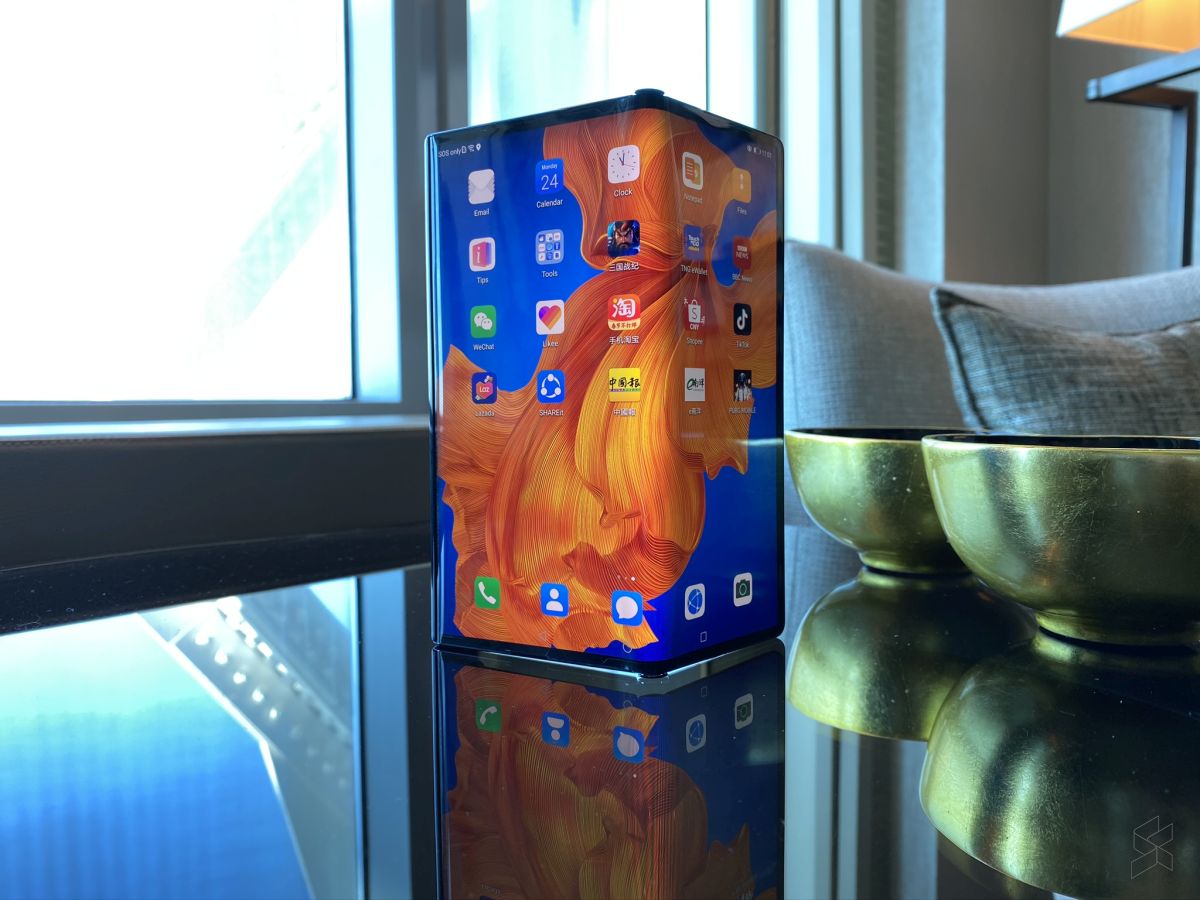
The Mate Xs has the potential to be the best foldable yet
Yes, perhaps it’s a rather bold claim to make. And yes, the Mate Xs comes with Huawei Mobile Services (HMS) instead of Google Mobile Services (GMS)—which means that you’ll need to depend on Huawei’s AppGallery for your apps. But in my brief time with the Mate Xs, I was struck with the possibilities that Huawei’s form-factor brings. I’ve also had extensive time with the Mate Xs’ main rival: Samsung’s Galaxy Fold. It’s a super device, and definitely has a lot going for it now that they’ve sorted out the hinge (…right?), but as mentioned earlier, most people end up using the smaller, secondary screen for the most part. And the secondary display on the Galaxy Fold, lest we forget, is a 4.7″ 720p display.
The Mate Xs, in contrast, has a 6.6″ front-facing screen when folded that pushes a resolution of 2480 x 1148. Even the “secondary” screen on the back of the Mate Xs (6.38″, 2480 x 892) is larger than the Fold’s front-facing display. And when unfolded, the 8″ flexible display of Huawei’s foldable pushes a 2K resolution of 2480 x 2200—compared to 2152 x 1536 on the Fold’s 7.3″ full display.
But we can’t talk about foldable smartphones without talking about the infamous issues that have plagued the form-factor ever since… well, I’m sure you remember. But it’s worth noting that Huawei’s first foldable didn’t really have the same level of notoriety, perhaps due to its limited availability (only in China).
There’s a new double-layer optical polyamide film that’s supposedly 80% stronger than the single layer film used in the past, while the new Mate Xs’ new, reinforced “Falcon Wing” hinge supposedly has 100 components to offer more durability—it does actually feel pretty rigid/solid, but I suppose only time can decide if something is actually durable. But now that the Chinese company has announced global availability for next month, perhaps it might be time to give the foldable phone a break.
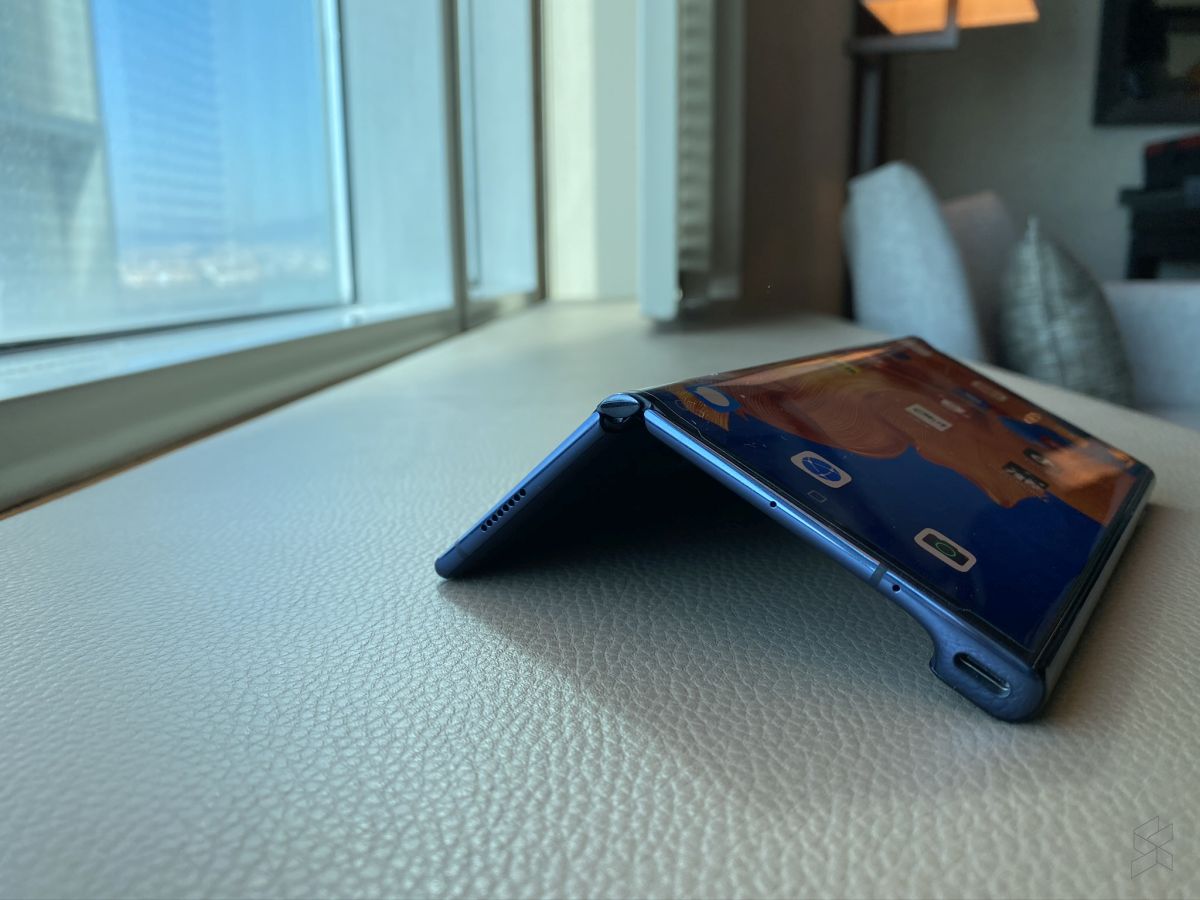
So yes, the verdict for now: huge, huge, potential. The Huawei Mate Xs has so much going for it. But it also appears that Huawei has overlooked certain subtle, yet key, features. Stereo speakers, more RAM, wireless charging—the absence of these might not break the Mate Xs, but it certainly dilutes the whole it’s-expensive-because-it-has-everything pricing model that Huawei has clearly gone with. And of course, there’s the fact that the top brass at Huawei still have some… political issues to sort out.
But notwithstanding these negatives, I’m excited. Excited to see something with this much wow-factor fleshed out with some practical features—both hardware and software-wise. And I’m thrilled that we’re going to see this hit the Malaysian market soon, too (Huawei Malaysia says that the Mate Xs will be available nationwide from the 20th of March 2020).

